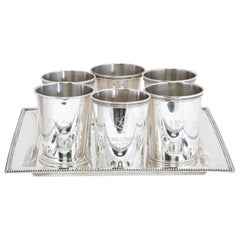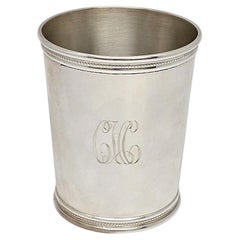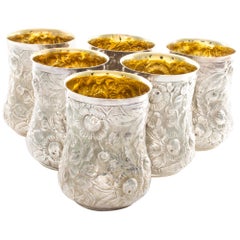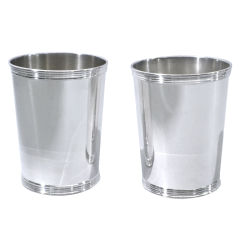Mint Sterling Silver Flatware
Mid-20th Century American Barware
Sterling Silver
20th Century Barware
Sterling Silver
Recent Sales
Early 2000s American Modern Barware
Sterling Silver
Vintage 1950s American Barware
Sterling Silver
Vintage 1940s American Barware
Sterling Silver
Vintage 1940s American Barware
Sterling Silver
20th Century American Barware
Sterling Silver
Vintage 1950s American Barware
Sterling Silver
Late 20th Century French Modern Silver Bowls
Silver, Sterling Silver
Mid-20th Century Unknown Modern Barware
Sterling Silver
20th Century Barware
Sterling Silver
20th Century American Edwardian Barware
Sterling Silver
Mid-20th Century American Art Deco Dinnerware and Flatware Sets
Sterling Silver
Vintage 1950s American Modern Barware
Vintage 1950s American Modern Barware
People Also Browsed
20th Century French Modern Barware
Sterling Silver
Antique Early 1900s Unknown Modern Dinnerware and Flatware Sets
Sterling Silver
Antique Late 19th Century American Barware
Sterling Silver
Mint Sterling Silver Flatware For Sale on 1stDibs
How Much is a Mint Sterling Silver Flatware?
Finding the Right Silver-flatware-silverplate for You
While early utensils were often shaped from clay, wood or bone, silversmiths later crafted flatware from precious metal. In the 19th century, mass production of electroplated flatware made silver utensils accessible to the middle class. Now, antique and vintage silver, flatware and silver-plate objects for dining and the home are heritage pieces reflecting this history of design.
Silver spoons were so prized in 15th-century England that people would travel with the valuable utensils. Forks in the 17th century were frequently made with steel and likewise only available to the upper class. Silver flatware continued to be produced in small workshops in the 18th century and was a luxury reserved for the elite. When George I came to the throne in 1714, the silver dining service — including plates, dishes, soup tureens, chargers and sauceboats — became all-important.
Innovative manufacturing techniques such as the electroplating process in the 19th century would transform silversmithing with industrialization. Sheffield plate was used from 1750 to 1880 and involved a fusion method to fabricate everything from knife handles to serveware. French industrial chemist Henri de Ruolz discovered a gilding and silver-plating process for metals in 1841, with the silver-like results so celebrated that Napoleon III ordered a 3,000-piece flatware set. The expansion of table service in the Victorian era also led to an increasing number of flatware and serving pieces in a canteen, or cutlery chest, all with specific uses, from toast forks to butter picks.
While affordable metal flatware is widely available today, historic brands including Gorham Manufacturing Company — whose legendary contribution to the history of silver making started in 1831 — and Christofle continue the tradition of silver and silver-plate flatware.
Browse 1stDibs for both antique and contemporary silver, flatware and silver-plate objects in a range of elegant designs to enhance your dining table.
- 1stDibs ExpertOctober 12, 2021The most expensive sterling silver flatware is said to be Grand Baroque by Wallace. Sterling silver is a combination of pure silver and copper in a 92.5% and 7.5% ratio. Sterling silver is more valuable because of the silver content. In addition, the age, design, and attractiveness of the silverware may mean its value far exceeds the silver value. Sterling silver flatware with ivory handles is always the most valuable. Find a collection of antique and vintage sterling silver flatware from different creators on 1stDibs today.
- 1stDibs ExpertApril 5, 2022The most popular sterling silver flatware pattern is really a matter of preference because so many exist. Some of the most popular include Chantilly, Rondo, Repousse and Grand Baroque. On 1stDibs, shop a collection of antique and contemporary sterling silver flatware from some of the world’s top sellers.
- 1stDibs ExpertNovember 26, 2024To identify a sterling silver flatware pattern, start by determining who made the flatware. To do so, search the backs of pieces for a maker's mark and then conduct an online search of trusted resources. Once you know who manufactured your flatware, you can search online catalogues and image galleries on websites devoted to that maker to find the name of your flatware pattern. If you run into any difficulty with the identification process, use the services of a knowledgeable expert, such as a certified appraiser or experienced antique dealer. Shop a wide variety of antique, vintage and contemporary silverware on 1stDibs.



